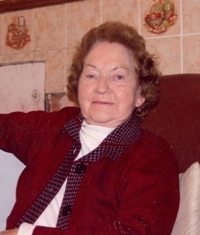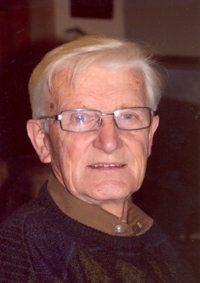Michael Devery initially examines a photograph from the 1950s which features him with a group of his classmates when he was attending a mechanical engineering course in Portlaoise. He explains that each year he would attend a short course and gain a certificate on completion, and he recalls the various places in which the courses were held. The Gaelic football games played with other companies are recalled, and at one time, Michael was captain of the Bord na Móna team. The team benefited from having county GAA players working for the semi-state company, he says. When he began work for Bord na Móna the camps had closed down and the workers had settled down locally. He discusses the German technology used to excavate the turf, powered by their own power generating station in Turraun. Issues which arose due to the weight of the machinery on the bog are discussed. A diesel-powered machine was later imported from Germany. Michael recalls the fact that when he was an apprentice, he was sent to unload bags from a boat to the ‘tin hut’ on the canal bank. The bags would be filled with crushed turf and brought by canal to Ballinasloe to be used to generate heat at the hospital there. Prior to turf production, brick making was a major source of employment in the area. The bricks were transported by canal to Dublin. Michael recalls that McHenrys sent fleets of lorries from Dublin to collect the turf. During heavy rain the roads would flood and the lorries would become prone to mishaps. He describes his responsibility for servicing the collector machine, and recalls one full night he spent repairing the machine so that the men would have work the following morning. He describes the layout of the fields and the work involved in the repair. The blanket of fog that arose from the bog that early dawn is recalled. Michael talks about the way in which the workers dealt with bad weather, and the transition from the labour intensive operation to the introduction of machinery. The first machine introduced was the stripper which ploughed the field. He describes the operation of the collector, with men loading up the equivalent of eight lorry-loads of turf a day. The next machine to be used was the automatic collector which did work equivalent to 42 jobs. With the invention of more machinery, Bord na Móna began to become more profitable, he explains, adding that the company was a good one to work for. He explains that now most of the bogs have now been worked and are reverting to arable land. Michael’s brother is involved in peat production on a small scale, along with a few other operators near Athlone, though it is difficult to compete with the scale of Bord na Móna. Michael discusses the men who came to Offaly to work and married into local families. The O’Reilly and Kelly families are remembered, and he explains that these men were initially employed on drainage works and were paid by the number of yards of drain worked per day. He explains how the virgin bog was marked out in sections and drains were then made on each side. The quality of the drain was important so that the machine could be safely put on the bog. The different methods of excavating milled peat as opposed to sod peat are described, and an anecdote about how the canal was excavated and the problem of slumping solved is recounted. The trains across Co. Offaly are discussed, and Michael details the contents of a letter written to John McNamara by Bord na Móna in 1945 in relation to summer work. He recalls visiting the old office in the yard in 1955, when he saw a box full of letters from those applying for jobs. The letters were filled with heart-wrenching stories from people who were badly in need of work. The men who arrived by bus in Leamanaghan and walked a few miles to Turraun looking for work are recalled. The concerts on Sunday nights which Michael attended as a boy, and local bands, such as Chas Ward and the Nylon Band from Ferbane, and Andy Hennessy from Kilbeggan, are remembered. Michael met his wife, Eileen Turley from Newbridge, Co. Galway, at a carnival in Shannonbridge where he was working at that time. He recalls the buses that he has driven over the years, explaining that he traded in a car for a Volkswagen minibus from Frank Cunningham & Sons in 1968. Michael’s business involved bringing people to matches in Dublin and to dances, and for a period he also kept his technical job at Bord na Móna but later had to resign from this.
The origin of peat production at Turraun is discussed. The Farrelly family sold the peat as bedding for the horses at the garrison in Crinkle, and the devastating effects of a flood on the Farrellys is described. The bog was then taken over by Purser Griffith who invested in the land. The Leinster Carbonising Company was formed which provided carbon for street lighting in Dublin. Michael explains how the peat was produced at that time and explains that a German expert was brought over to develop the first machinery. In 1924 the Turf Development Board was founded. Jim Dunican, whom Michael met when he started work at Bord na Móna in 1955, is remembered. Jim had worked all his life with the Turf Development Board and Michael explains the reason why he was still employed after the general retirement age. He continues to discuss the history of the development of technology on the bog. With the introduction of energy by the ESB, all the technology became electrical, and he recalls the standard order of three lights and one socket for each house. He describes the introduction of electricity to one household and the amazement of the people at the brightness of the light. The changes which came about over the years due to the introduction of domestic equipment are discussed. Michael describes his grandmother’s house and the way in which she lived, explaining that perhaps three times a year she would travel to town to buy supplies. He recalls hearing the All-Ireland in 1947 on a neighbour’s radio which played to an eager audience in the yard, and the conversations generated at work by important matches are remembered. The building of the canal and the method by which water levels were maintained by engineers is described. A ‘supply’ was built through the bog to maintain the water pressure. On one occasion, a few days of heavy rain led to a burst in the supply, which in turn led to a corresponding flood from the canal, and thus Kieran Farrelly’s land was flooded and his business of peat production destroyed. Prior to Farrelly’s commercial enterprise, people dug turf with a slean for domestic use. The later business of Griffith and the Leinster Carbonising Company, which manufactured charcoal from peat is discussed, as is the lesser requirement for charcoal due to the introduction of electricity. He mentions his brother Paddy’s bogs and the possibility of producing charcoal again from one of these bogs, and he explains that it was recognised that if only a few feet of turf remains on a bog, crops and grass can be grown. The importance of water to the development of future bogs is explained.

Michael Devery (b. 1938)
 The Offaly Collection: memories of early industrial peat harvesting at Turraun
€50.00
The Offaly Collection: memories of early industrial peat harvesting at Turraun
€50.00 Kathleen Dunican (née Mahon) (b. 1926)
€10.00 – €20.00
Kathleen Dunican (née Mahon) (b. 1926)
€10.00 – €20.00Michael Devery (b. 1938)
€10.00 – €20.00
Additional information
| Type: | MP3 |
|---|---|
| Audio series: | The Offaly Collection: memories of early industrial peat harvesting at Turraun |
| Bitrate: | 128 kbps |
| Download time limit: | 48 hours |
| File size(s): | 49.2 MB |
| Number of files: | 1 |
| Product ID: | CDOF09-01 |
| Subject: | The history and development of turf production |
| Recorded by: | Maurice O’Keeffe – Irish Life and Lore |





